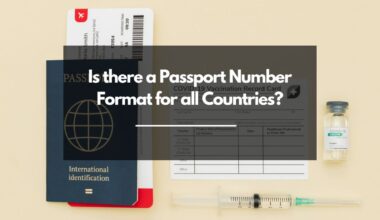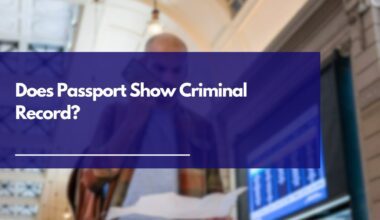As an Amazon Associate, I earn a small commission from qualifying purchases. Learn more about this.
We’ve all had that moment, flipping through our passports, admiring the collection of colorful stamps, and suddenly wondering, “When exactly was I in Greece, or Japan, or South Africa?”
Generally, having a concrete travel history can be a useful tool for reminiscing, planning future trips, or for more practical reasons like visa applications. This article will help you understand how to check your passport travel history.
How to Check My Passport Travel History
Whether you’re an occasional vacationer or a frequent jet-setter, keeping track of your passport travel history can be incredibly helpful.
Not only does it serve as a personal travelogue of sorts, it can also assist in the practical aspects like preparing for visa applications or meeting tax requirements, and generally knowing whether you have any red flags.
Here’s how you can go about checking your passport travel history.
First, it’s essential to note that your physical passport can provide some certain information.
For instance, every time you enter or exit a country, your passport is typically stamped with the date and place of entry or departure. This is basically your travel history in a note.
However, this system isn’t perfect.
Some countries, for instance, have stopped stamping passports or have digitized the entire process. Moreover, stamps can be smudged, pages can get filled up, and older passports eventually get replaced, potentially losing your older travel records.
At the time, there’s also no digitalized resource where the general public can get their travel history using their passport. This also applies to using passports to check criminal records
To compensate for these limitations, you might consider maintaining a travel diary, and logging your trips as you make them.
Include key details such as dates, destinations, and the purpose of your visit. This method requires diligence and consistency, but it’s one way to keep an accurate record.
You could also request your travel records from immigration or border control agencies.
In the United States, for example, you can file a request under the Freedom of Information Act (FOIA) to get your I-94 travel records, which document arrivals and departures in and out of the country. The process varies from country to country, and it’s important to check the specific procedure where you reside.
Finally, you can refer to your past airline tickets and boarding passes, either physical copies or digital versions in your email inbox.
Some airlines also allow registered users to check their past travel history online. These can provide an accurate timestamp of your travels.
Does Immigration Know Your Travel History?
The short answer is, yes, they often do. The immigration departments and border control agencies of many countries have systems in place to track entries and exits.
When you hand over your passport to an immigration officer, they usually scan it, logging your arrival or departure electronically. It’s through these systems that your travel history becomes accessible to immigration authorities.
However, it’s worth noting that how much detail is stored and for how long can vary greatly from country to country.
Some countries maintain quite extensive records, while others may have more limited data.
For instance, in the United States, your I-94 travel record, which captures your arrival and departure details, is typically available for the past five years.
You also need to consider the information shared between countries.
Several countries have immigration information-sharing agreements. This means that when you apply for a visa or enter a country, the immigration officials might be able to access your travel history from partner nations.
Related: Do Embassies Know About Visa Refusal in Other Countries?
One such example is the “Five Eyes” intelligence alliance, comprising the United States, the United Kingdom, Canada, Australia, and New Zealand.
It’s also interesting to note that, in recent years, biometric data has been increasingly used in immigration procedures, further enhancing the ability to track individuals’ travel histories.
Fingerprints, photos, and even iris scans are being used in many countries to link individuals unequivocally to their travel records.
Are Travel Histories any Important for Visa Applications?
When it comes to visa applications, travel history is indeed important. In fact, it plays a important role in the decision-making process for visa officers. But you might be wondering, why is this the case?
Firstly, your travel history can be an indicator of your credibility as a traveler. A passport filled with stamps from various countries can show that you’ve been a responsible traveler in the past.
It can demonstrate that you’ve adhered to the rules of other countries by not overstaying your welcome or committing any significant violations. Essentially, it helps to establish a positive track record.
Secondly, your travel history can also provide context about your travel patterns and purposes.
If your passport shows frequent visits to a particular country, it could suggest you have strong ties there, like family or business connections. This information could be relevant to visa officers when they’re assessing your application.
In some instances, your travel history could potentially raise red flags.
For example, if you’ve visited conflict zones or countries known for certain illegal activities, visa officers might scrutinize your application more closely. It’s not a definitive deal-breaker, but it could invite additional queries.
In many visa application forms, you’ll find questions asking about your travel history. It’s important to be completely truthful when filling out this section.
Misrepresenting or omitting information can have serious consequences, including visa denials and bans.
Conclusion
Knowing how to access your travel history and understanding its implications is a fundamental part of being a savvy traveler. Your international adventures leave traces that can affect visa applications and other formal procedure







